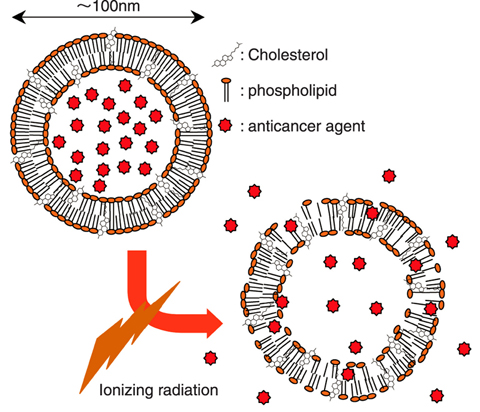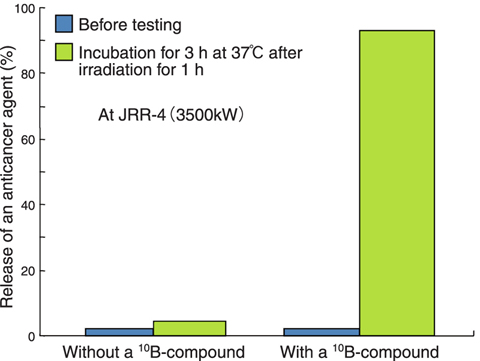
Fig.4-26 Schematic of a liposome opened by radiation

Fig.4-27 Release of an anti-cancer agent from a liposome upon thermal neutron irradiation
Presently, half of all Japanese are expected to get cancer, the "national disease". Surgery, chemotherapy, and radiotherapy are generally performed to remove tumors. Actually, combinations of these therapies are usually efficient for this aim. However, chemotherapy and radiotherapy are still in the development stage because these therapies often give physical and/or mental stress to the patients. Direct administration of an anticancer agent sometimes has side effects due to undesirable influence upon normal cells. To avoid this, development of drug delivery systems (DDS) for anticancer agents which transfer them selectively to cancer cells is essential. In radiotherapy research, tumor-selective irradiation is now one of the main goals. Fortunately, heavy ion beams, whose particle energy can be controlled strictly, are expected to be a site-selective radiation. Now, we have developed a nano-capsule (liposome) that breaks when irradiated, for a new concept of DDS: concurrent cancer chemotherapy and radiotherapy (Fig.4-26).
We investigated breakability of a variety of liposomes which have different lipid compositions and different lipid content ratios, using X-rays which are easy to use in experiments. At a result, we found that the breakability can be controlled by changing the ratio of three lipid components (distearyl phosphatidylcholine, dilinoleoyl phosphatidylcholine, and cholesterol) and the lipid concentration of the liposome suspension. We also found that radiation dose-rate also influences the breakability. To date, the liposome can be degraded by several tens of Grays, which is comparable with a maximum dose at an affected part (tumor), in radiotherapy using a heavy ion beam. On the other hand, the liposome withstands thermal neutrons that are used in neutron capture therapy effective in brain tumors. However, we succeeded in making the liposome weak against thermal neutrons by co-encapsulation of a 10B-compound into the liposome along with an anticancer agent (Fig.4-27).
Although more development in, e.g., selectivity to tumors is needed for clinical use, we do expect that this liposome DDS can contribute to diminish physical and mental stress during cancer treatments as a 'bridge' which offsets a demerit of one therapy with a demerit of another therapy.